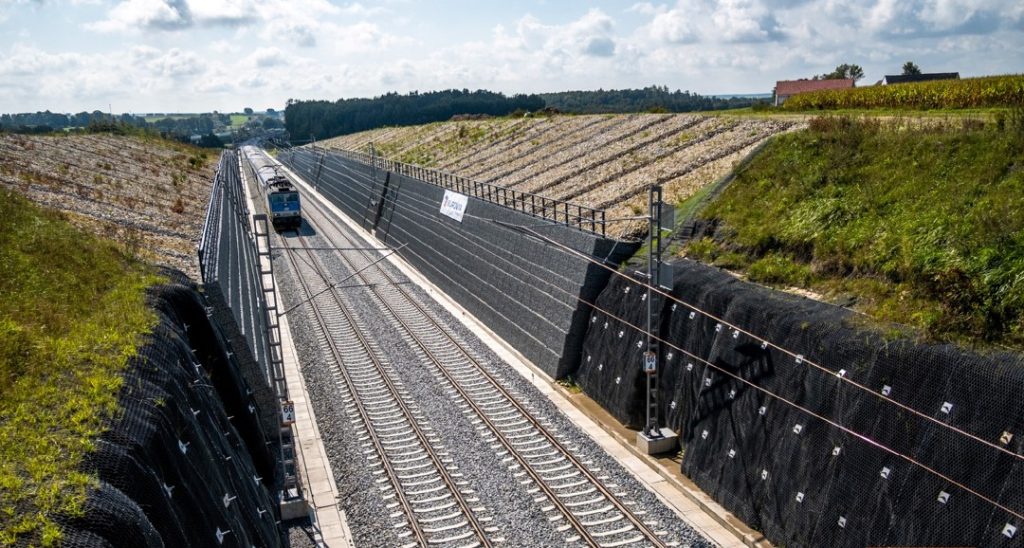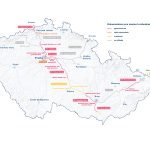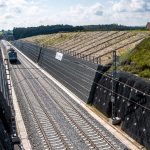 The Czech rail infrastructure manager SŽ and a consortium of Sudop Praha, Egis Rail and Mott MacDonald signed a contract for the development of needed documentation for Central Bohemia high-speed rail section. The bid was evaluated in a Best Value way, which emphasizes primarily the expertise and experience of the supplier in all processes of preparation of the work (70% of the assessment) and the remaining 30% constitutes the price.
The Czech rail infrastructure manager SŽ and a consortium of Sudop Praha, Egis Rail and Mott MacDonald signed a contract for the development of needed documentation for Central Bohemia high-speed rail section. The bid was evaluated in a Best Value way, which emphasizes primarily the expertise and experience of the supplier in all processes of preparation of the work (70% of the assessment) and the remaining 30% constitutes the price.
The consortium will be responsible for the delivery of documentation for issuing a decision on locating a construction (DÚR) and documents for Environmental Impact Assessment (EIA) process for the high-speed line between Poříčany and Světla nad Sázavou, which will be part of the line from Prague to Brno.
The nearly 80-km section follows the already planned Polabí high-speed line Polabí from Prague to Poříčany, which is also part of the new high-speed line from the capital to Brno.
The work schedule assumes obtaining a zoning decision in 2025 and then, the construction is scheduled to start two years later. The line will be used exclusively for passenger traffic, and trains will travel along it at a speed of 320 km/h.
The Central Bohemia high-speed rail connection is part of the Praha – Brno – Ostrava and Brno – Břeclav corridor and will be the busiest section on Prague – Brno HSR corridor. The construction of the section in connection with Polabí HSR (which includes Prague – Brno – Ostrava and Prague – Hradec Králové – Poland routes) will make it possible to reduce the travel times of trains on the route Prague – Brno to approximately two hours and will bring new competitive connections on the route Prague – Jihlava. The line will provide connection with the fast route RS 1 on Prague – Brno – Ostrava – Poland route. The two track line will be electrified with an AC power supply and will be equipped with the ETCS
The construction for the Central Bohemia high-speed line is expected to start in 2028 and to be completed in 2032 when trains are allowed to run at a maximum speed of 320 km/h. The construction also includes the reconstruction of Světlá nad Sázavou railway station (30 km northwest of Jihlava) which will include the construction of barrier-free platforms with access via an underpass as well as the replacement of a problematic crossing.
By now, SŽ is preparing the technical proposals for more than 300 km of high-speed rail lines. Design work is also continuing for Prague East and Roudnice nad Labem HSR terminals. This year, the technical designs of several lines will be completed, preparations for design & build tenders will begin and processes for property settlement will be set up.
Czechia’s HSR projects will be integrated into the EU high-speed rail network part of the TEN-T providing connections to Berlin, Vienna, Budapest, Bratislava and in Poland to Katowice and Warsaw. Recently, SŽ signed a MoU with CPK and RB Rail to establish a high-speed rail network in the Three Seas region which is expected to have a total length of 4,500 km. The Czech HSR system will be connected to the CPK’s lines and Rail Baltica through the Bohumín – Katowice and Hradec Králové – Wrocław lines the latest being expected to become operational after 2030.
In 2022 SŽ approved the creation of a new unit which will be responsible for the preparation, construction and operation of the new rail system.
Under an agreement signed in 2021 with SŽ, for the next years SNCF Réseau will provide consultation for the preparation of Czechia’s HSR network. In June 2022, the legendary TGV train arrived in the Czech Republic and was put on public display at the train stations in Prague, Brno, Jihlava, and Ústí nad Labem – the cities which will benefit high-speed rail connections. Prague – Brno will be the first HSR section which will become operational by 2030
Preparations are really moving ahead now more than ever. The network should eventually link up to Dresden, Wroclaw, Katowice, Bratislava and Vienna. We hope to have the first section from Prague to Brno finished in ten years’ time. The project should cost about 700 billion, and it will involve spending about 40 billion crowns a year.”
Country’s 2027 strategy with a vision beyond 2050 supports the construction of the high-speed network as part of the TEN-T Core and Comprehensive networks. The initial projects cover high-speed connections totalling 700 km linking major European cities until 2040.
Share on:






